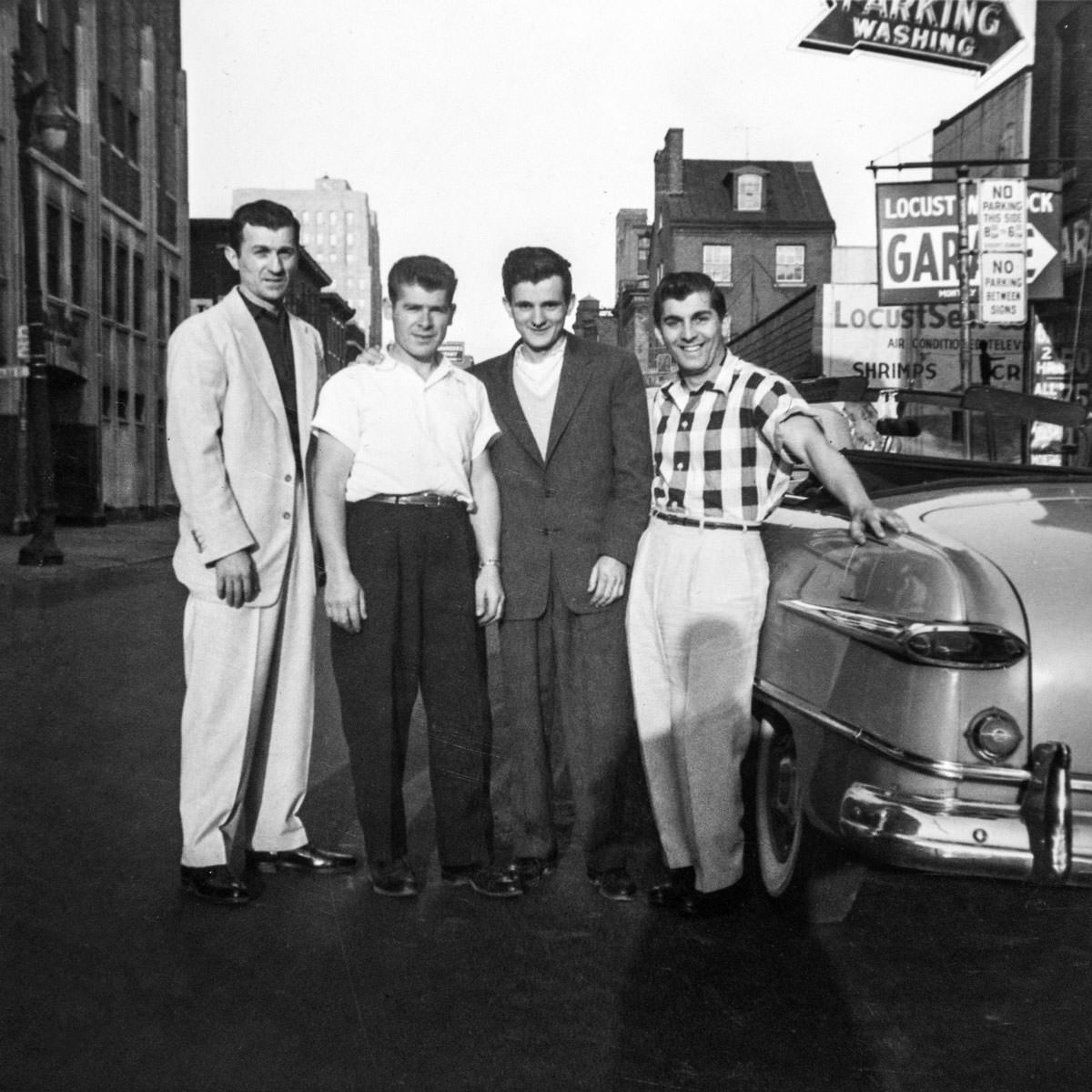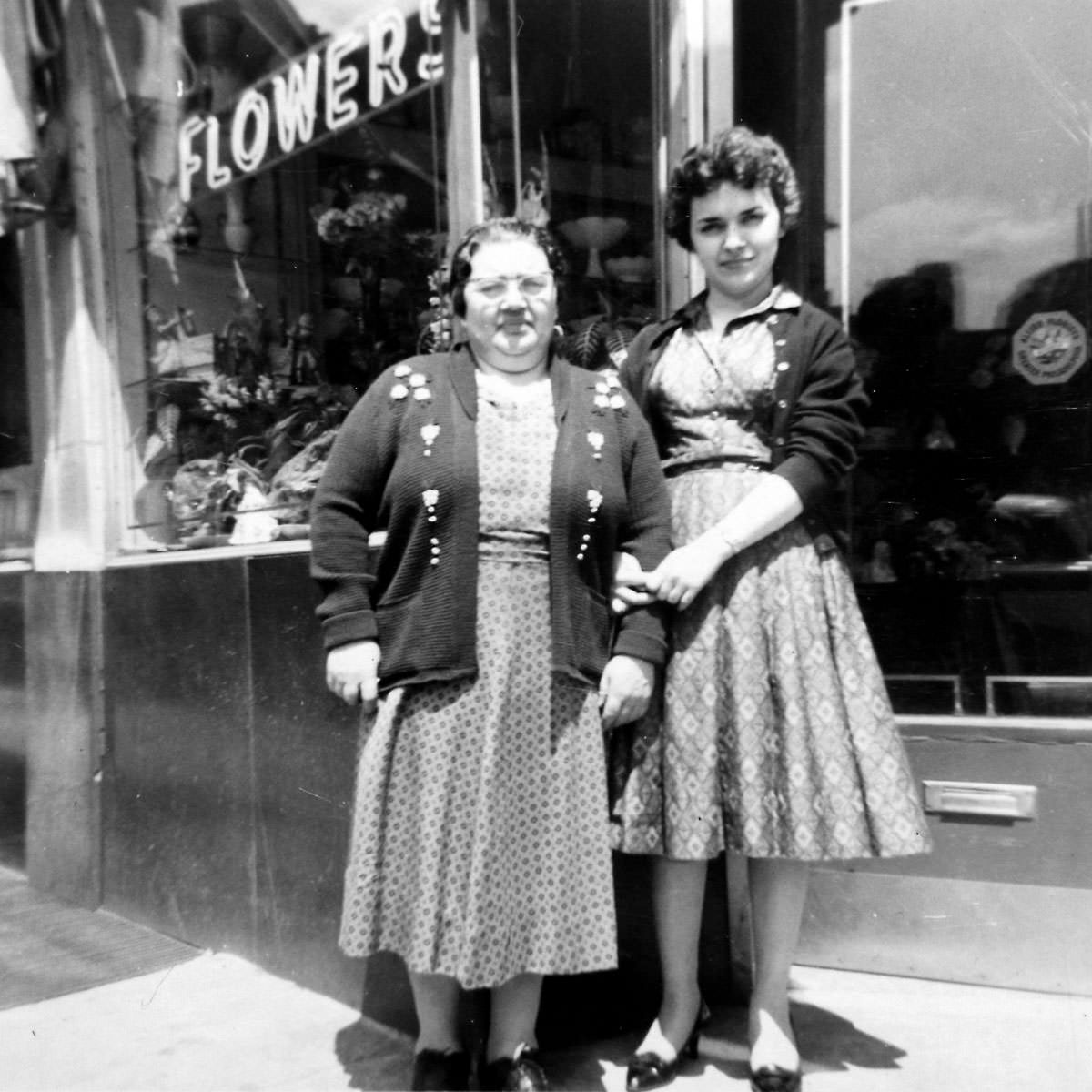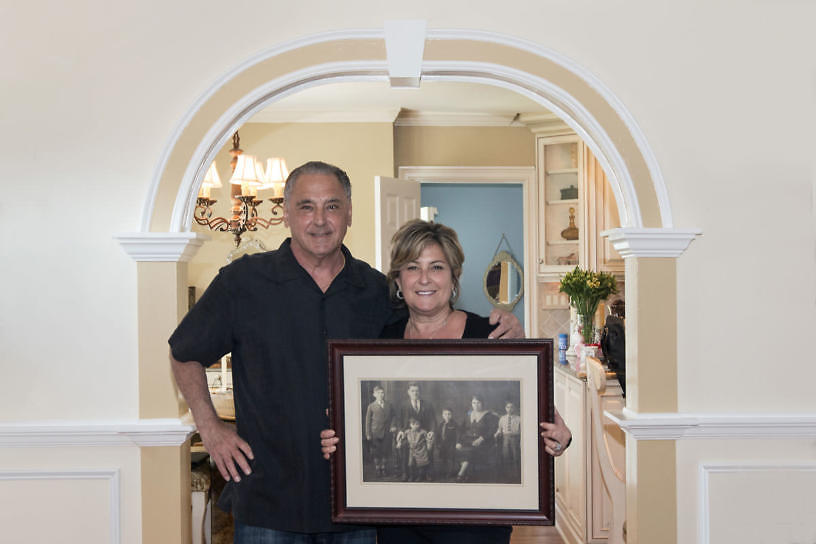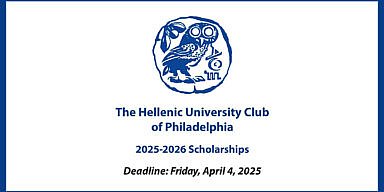Huntingdon Valley, PA – “I still have ties to St. George Greek Orthodox Cathedral and the community in Olde City. That’s where my roots are,” said Joyce Trantas Gutchigian.
Last month, Gutchigian posted a photograph from 1965 on her Facebook page. It was an old black and white image of Gutchigian and her two siblings taken in Philadelphia. The image caption read: Siblings… Palm Sunday 1965???? Yup, that’s me up front! I contacted Gutchigian about the photograph, and she told me she had boxes of them. “They go all the way back to old Greektown in Philadelphia and some to Greece,” she added. Gutchigian grew up in a first-generation Greek family from Velvendo, Greece, that settled in Olde City Philadelphia around 1918-1920.
I decided to pay Joyce a visit in the suburbs where she now lives. Why do you ask? I love history and photography. And when both involve Philadelphia’s Greek community, I want to know more, especially since there’s so little of it on record. But even more importantly, I am a member of the Greek American Heritage Society of Philadelphia, and one of our objectives is to save our past for future generations.
Gutchigian grew up, for the most part, in the suburbs as Joyce Trantas. But part of her early childhood was spent growing up in Philadelphia. As I arrived at her home on a cul de sac in Huntingdon Valley, I thought how far Old Greektown was from this place. It was a far cry from the cement sidewalks and row homes of city life. A beautiful single home and manicured lawn welcomed me, along with a tiny white dog and her husband, George in the driveway. George directed me to the front of the house where Joyce stood smiling with open arms. A friendly hug and kiss on the cheek, Greek style, united us as Hellenes.
When I entered her home, the living room wall displayed a series of perfectly framed images that told her family ancestry like chapters in a book. Staring back at me were formal group shots in black and white of her ancestors and siblings in classic poses. These were Joyce’s treasures of the past and they were displayed like trophies for everyone to see who entered. Each image told a story of a chapter of her family, from Greece to America. I was impressed by Joyce’s effort to preserve her past, but truth be told, I wanted to get to the photographs she told me about over the phone. The photographs that recorded life in Greektown.
As we walked into the kitchen, I saw more old black and white photographs. Some were in boxes, others in manila envelopes. Many were spread out loosely from one end of the table to the other. These were the images I was looking for. I had struck gold. A treasure trove of Philadelphia’s Greek community in real life. Greek-American soldiers, Locust Street Greek businesses and street scenes that gave us a window into the community in those early years. These were the images we had seen little of. Photographs that have been lost in time. They captured a chapter of Greek history in Philadelphia from the 1940’s through the 1960’s.

Four Greek men and classic car
Joyce and her husband George sat with me for several hours and we talked about the images and her family. Joyce’s father was born on Locust Street, in the heart of the historic Greek neighborhood that occupied approximately six square blocks known as Greektown (Locust and Lombard & 12th to 6th Streets). It was arguably the peak of Greektown. Records show that Greeks settled in Philadelphia as early as the mid-19th Century. Two churches (Evangelismos and St. George Cathedral) would eventually become the hub for a community that was established by the mid-1920’s (Annunciation/Evangelismos and St. George Cathedral). From that point through the 1960’s Greektown thrived. Over the next three decades saw Greeks moving East into Camden, New Jersey and South Jersey, and West into a new Greektown, Upper Darby. But that’s another story.

Sultana and Mary Bonatsas, Greektown
We decided that we would put together a collection of these rare and treasured photographs for the Greek American Heritage Society of Philadelphia, which is building an archive. The images would become part of the permanent collection and be available on their website in the near future for everyone to see and share. We also agreed that some of them would be featured at the upcoming Photo Tour 2017 scheduled for this Sunday, May 7, 2017. The annual event, now in its third year is a photo sharing event about Greek history in the area. Open to the public, this year’s theme is titled, “The Immigrant Experience.”
Over the course of the last six years, I have visited many organizations and churches all over the Delaware Valley. Unfortunately, just a few have organized and preserved these historic artifacts. Some have no records at all, having lost them to accidents or even thrown them away. When I talk to people about their old photographs, especially those related to Philadelphia’s Greek history, many tell me they just threw them out when their parents passed on or when they moved. Except for a few family portraits, the rest are tossed away because they assumed they are worthless.
Some images and documents have been preserved in the archives at the Balch Institute of Philadelphia that has since closed its doors and been absorbed by the Historical Society of Pennsylvania. But the truth is, much of our early history is already gone or rotting away in our basements and attics. The history of Philadelphia’s Greeks is quickly disappearing. Fortunately, Joyce Triantas’ family collection was rescued and will live on in the archives of GAHSP. These images will help tell the story of Philadelphia’s Greek community for future generations.
The Greek American Heritage Society of Philadelphia wants to help by doing more. They have acquired various collections of photographs, video footage, documents and more. If you have items you’d like to contribute to the history of our community please contact the GAHSP, because Greek history matters.



